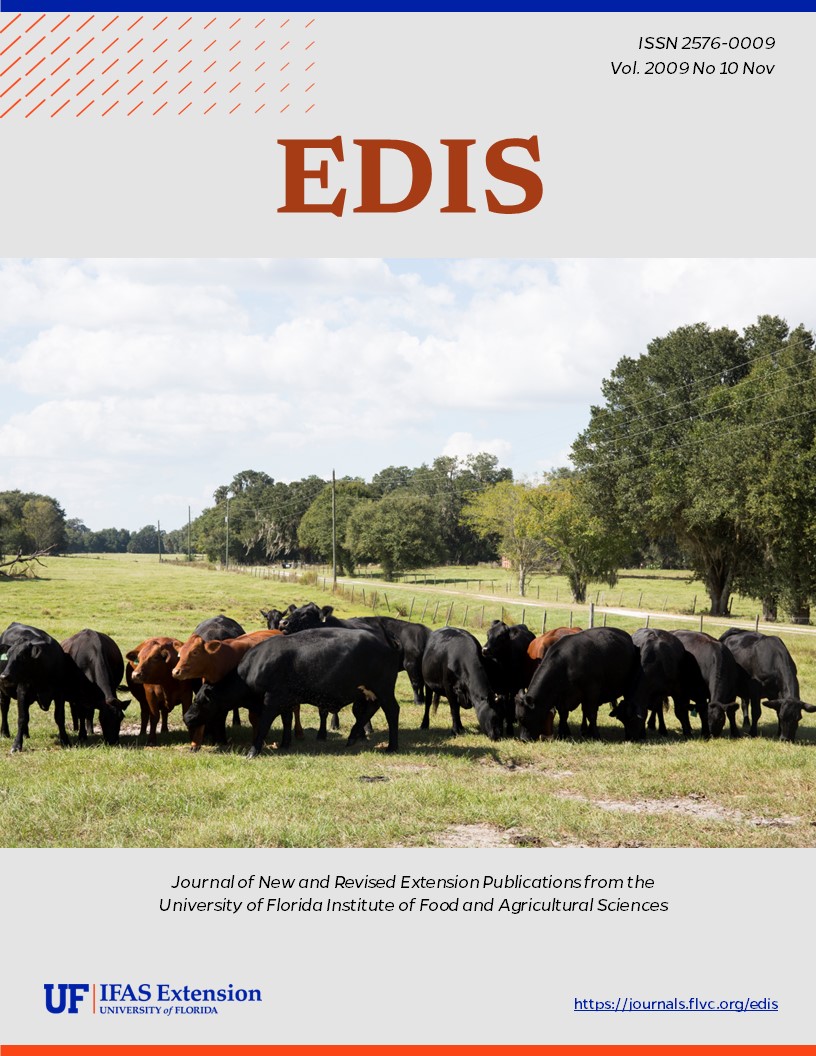Abstract
Revised! Circular 1401, a 7-page fact sheet by Mark A. Mossler and Jonathan Crane, provides an overview of production and pest management practices for mango in Florida. Includes references. Published by the UF Department of Horticultural Sciences, November 2009. Reviewed July 2013 .
References
Personal communication, Dr. J. Crane, August 2008.
Evans, E. 2008. Recent Trends in World and U.S. Mango Production, Trade, and Consumption. Food and Resource Economics Department document FE718. Florida Cooperative Extension Service, Institute of Food and Agricultural Sciences, University of Florida. https://doi.org/10.32473/edis-fe718-2008
Crane, J.H., Balerdi, C.F., and Maguire, I. 2006. Mango Growing in the Florida Home Landscape. Horticultural Sciences document HS2. Florida Cooperative Extension Service, Institute of Food and Agricultural Sciences, University of Florida. https://doi.org/10.32473/edis-mg216-2006
Simmone, A., Bobroff, L.B., Cooper, A., Poirier, S., Murphy, M., Oswald, M.J., and Procise, C. 2007. South Florida Tropicals: Mango. Department of Family, Youth and Community Services fact sheet FCS8532. Florida Cooperative Extension Service, Institute of Food and Agricultural Sciences, University of Florida.
Browning, H.W., Childers, C.C., Stansly, P.A., Pena, J., and Rogers, M.E. 2007. 2008 Florida Citrus Pest Management Guide: Soft-bodied Insects Attacking Foliage and Fruit. Entomology and Nematology department document ENY-604. Florida Cooperative Extension Service, Institute of Food and Agricultural Sciences, University of Florida. https://doi.org/10.32473/edis-cg004-2005
Denmark, H.A. and Wolfenbarger, D.O. 2008. Redbanded Thrips. Department of Entomology and Nematology, University of Florida, and Florida Depart ment of Agriculture and Consumer Services, Division of Plant Industry Featured Creatures website.
UF/IFAS Pesticide Information Office. 2001. Tropical Fruit Management Survey. Agronomy Department, Institute of Food and Agricultural Sciences, University of Florida.
Crane, J.H., and Mossler, M.A. 2006. Pesticides Registered for Tropical Fruit Crops in Florida. Horticultural Sciences document HS929. Florida Cooperative Extension Service, Institute of Food and Agricultural Sciences, University of Florida.
Anonymous pricing.
JMS Flower Farms labels, Vero Beach, FL..
Helena labels, Collierville, TN.
Gowan labels, Yuma, AZ.
Webb Wright labels, Ft. Myers, FL.
Valent BioSciences labels, Libertyville, IL.
Bayer CropScience labels, Research Triangle Park, NC.
Knapp, J.L. 1999. Citrus Commodity: A Biologic and Economic Assessment of Pesticide Usage. USDA National Agricultural Pesticide Impact Assessment Program Report No. 1-CA-99.
Monsanto labels, St. Louis, MO.
Pernezny, K. and Marlatt, R.B. 1993. Some Common Diseases of Mango in Florida. Plant Pathology Department document PP23. Florida Cooperative Extension Service, Institute of Food and Agricultural Sciences, University of Florida.
DuPont Crop Protection labels, Wilmington, DE.
Arysta LifeScience, Cary, NC.
Taminco labels, Smyrna, GA.
McSorley, R., Campbell, C.W., and Goldweber, S. 1980. Observations on a Mango Decline in South Florida. Proc. Fla. State Hort. Soc. 93:132-133.
McSorley, R., and Parrado, J.L. 1982. Spatial Arrangement of Nematodes Around Four Species of Tropical Fruit Trees. Nematropica. Vol. 12, No. 2.
AgSci website - accessed 9/08.

